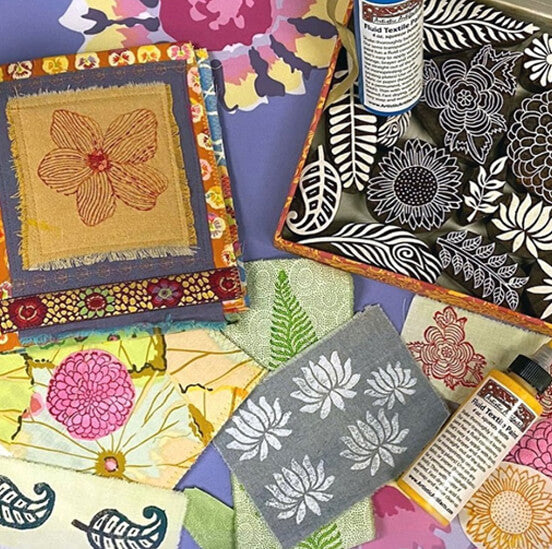Mandarin Vest Pattern by Indygo Essentials
I was recently thrilled with a new garment sewn by Nancy McCarthy for me! I’ve asked Nancy to share her thoughts on the pattern for you. -- Judy
Guest post by Nancy McCarthy
Judy wore this vest in a recent Facebook Live session (Saturdays, 9:30 am ET) and got lots of positive feedback. I hope you are inspired to try this sophisticated look for yourself!
To me, this Mandarin Vest pattern by Indygo Essentials looks like it is inspired by traditional clothing silhouettes. I love the versatility of these basic shapes. The possibilities for your garment fabrics and embellishments are endless — from casual to dressy casual to dressy. What a great way to use a batik panel for the back and create pieced fabric for the rest of the garment! Or as the ground for an ever-evolving stitch meditation! I’m including other images from Indygo Junction so you can see the vest in the two lengths as well as different fabric choices.
For a casual garment, I chose a Marcia Derse fabric in a canvas weight (now sold out) as mentioned in the suggested fabrics on the pattern envelope. I also chose to underline the vest, again according to options listed on the pattern, because I wanted a bit more weight in the garment and to conceal the wrong side of the main fabric.
The pattern includes instructions for underlining, if you are not familiar with this construction process. It’s easy! You just cut identical garment pieces from both the fashion fabric and the underlining fabric and stack them WRONG sides together, then treat as one. (Do maintain the grain in both fabrics.) I used a coordinating color — there are so many to choose from! — of Marcia Derse’s Palette Solids. I used a machine basting stitch to sew the edges together — hand basting also works.
The pattern offers both regular side pockets and the super cute little purse pocket on the outside. (Talk about embellishment possibilities!) I toyed with the idea of inserting the side pockets, in addition to using the purse pocket, but decided I liked the interior clean. The purse pocket has a self-lining that forms the casing for the drawstring and finishes the edges. It is top stitched on — I used my BERNINA #10 edgestitch foot. Read the instructions carefully and do use all the pattern markings provided. I purchased double fold bias binding to use rather than making my own, and just edge stitched it before using it. Note that the drawstring is caught into the construction seam of the pocket!
Note that for this pattern seam allowances are 1/2 in., not 5/8 in. as usually seen in garment patterns from the ‘big four’ (Simplicity, McCall's, Vogue, and Butterick) companies. I serged the seam edges after sewing regular seams. I also serged the armhole hems, the front facing edges, and the bottom hem rather than folding them a 1/4 in. to clean finish. The armhole edges are topstitched in place. I used my BERNINA #5 blindstitch foot to blind stitch the bottom hem and the front facings in place.
The collar may be higher than you are used to, but I think it really adds to the look. The pattern instructions for the collar are typical and work just fine, but if you have sewn other garments you may have a favorite way to install the collar that will also work. The pattern offers the option of a button and loop closure near the neck — if you have a fabulous large button, this would be a great place to use it. You can see a beautiful frog closure in the Indygo Essentials example pictured here. You could also put the button and loop anywhere along the front edge that pleases you.
Notes on the pattern:
- Do follow the pattern when choosing your size! Use your bust measurement, even though you may think the garment will look generous. Because of the shaping and the way the shoulders are cut, it is better to go a little bigger than a little smaller.
- Once you have chosen your size, I would strongly recommend using a highlighter to mark the cutting line for your chosen size on the pattern pieces. I found that the size markings on the cutting lines were very confusing around the shoulders and neckline! In addition, I carefully compared the sizes of the collar pieces to each other by stacking them up in relative size order and determining which one matched my chosen size rather than trusting the marking on the paper.
- And remember — 1/2 in. seams!
I hope this pattern joins your other tried and true patterns!













Leave a comment